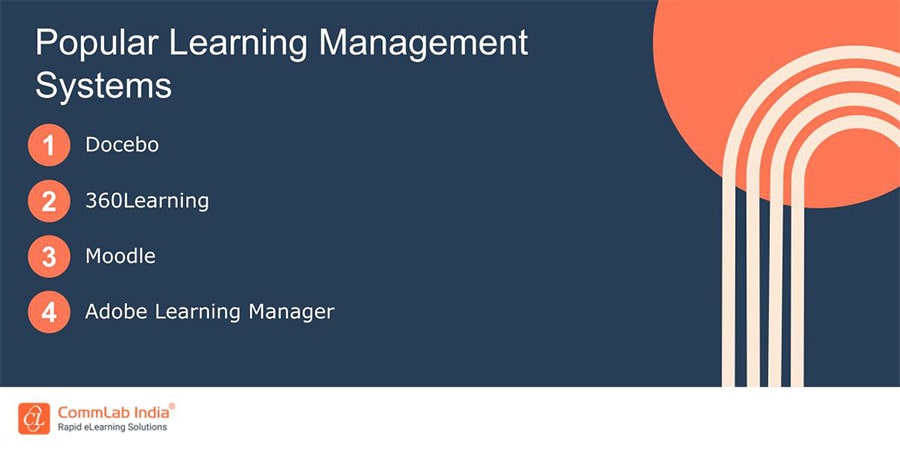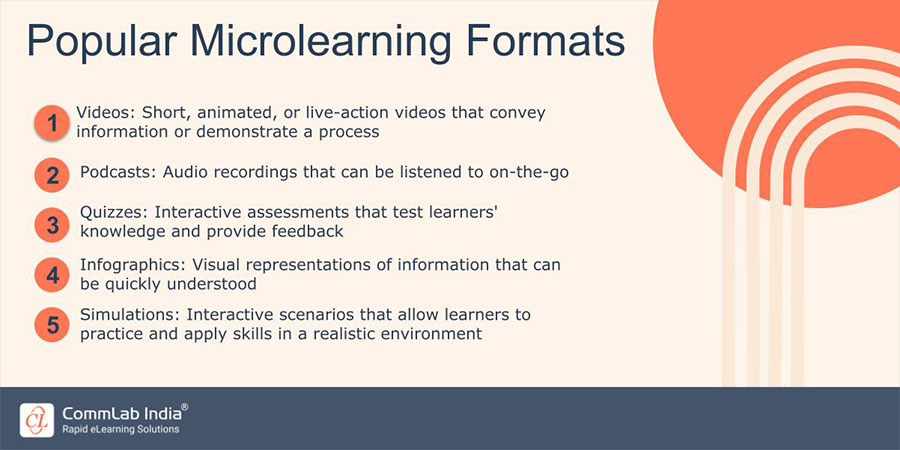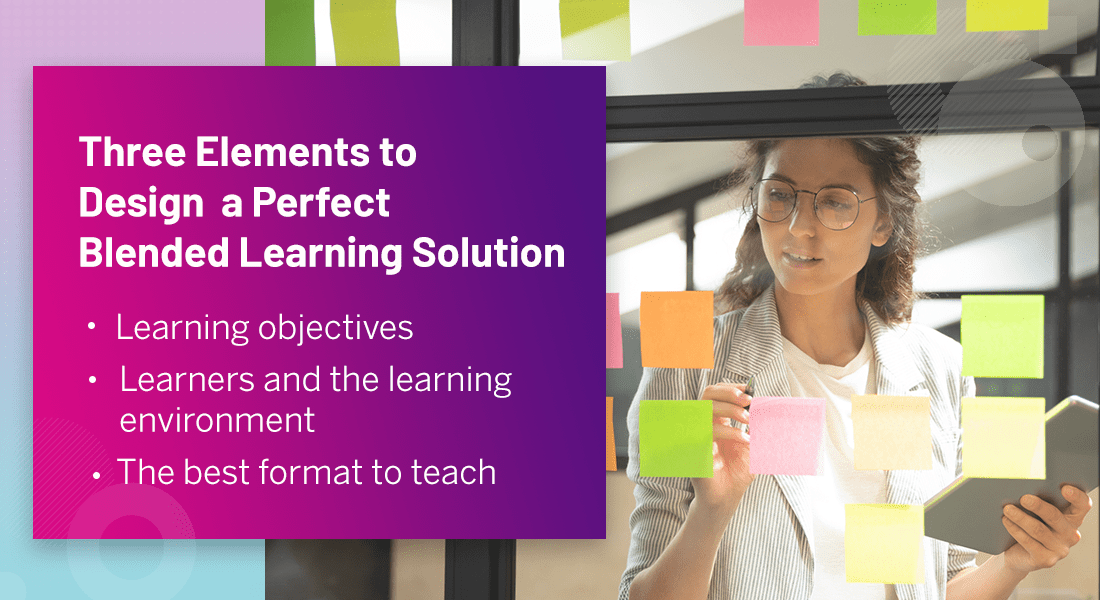Skyrocket Your Sales! How Blended Learning Can Enhance Your Product Training

In today's fast-paced business environment, a deep understanding of your products is essential for success. Effective product training empowers your sales teams, customer support staff, and technicians to provide unmatched value to customers. This translates into increased sales, satisfied clients, and a stronger competitive edge. Blended learning offers a powerful solution to the challenges of traditional product training. By seamlessly combining online and in-person learning experiences, this approach ensures flexibility, personalized learning, and greater engagement for your workforce.
Trying to Enhance Your Product Training? Blended Learning can Help!
Here are a few of its key components -
- Self-paced online modules
- Virtual instructor-led training(VILT)
- Simulations
- Assessments and quizzes
- Knowledge base/resource library
What are the Challenges of Traditional Product Training?
While traditional instructor-led training has its place, it faces a number of limitations when it comes to comprehensive product training:
- Limited Scalability: Large or geographically dispersed teams struggle with the logistics of gathering everyone for centralized training sessions.
- High Costs: Travel expenses, venue rentals, and instructor fees quickly add up.
- Schedule Disruptions: Pulling employees away from their daily tasks for long blocks of training can impact productivity.
- Inflexible Learning: Traditional in-person training often follows a "one-size-fits-all" approach, lacking the adaptability to cater to different learning styles.
→ Download Infographic Now: Are You Ready to Try the Blended Learning Approach?
How Blended Learning Addresses Training Challenges?
- Flexibility and Convenience: The cornerstone of blended learning is flexibility. Self-paced online modules, accessible anytime and anywhere, empower employees to fit training into their busy schedules. They can learn at their own pace, revisit sections as needed, and pause to take notes or reflect - all without disrupting their workflow. This is ideal for distributed teams as everyone can access training regardless of their location.
- Personalization: Everyone absorbs information differently. Blended learning caters to this with a mix of learning formats. For visual learners, videos and infographics break down complex product features. Text-based modules suit those who prefer reading. Interactive simulations appeal to hands-on learners who thrive on practical application. This personalized approach ensures that everyone truly engages and benefits from the training.
- Increased Engagement: Online quizzes, gamified elements, and virtual discussions break the monotony of purely passive instructor-led sessions. Simulations immerse learners in realistic customer interactions, forcing them to apply product knowledge on the spot. Collaborative online discussions foster a sense of community and allow employees to learn from each other's experiences. This active learning approach leads to deeper understanding and retention.
- Cost-Effectiveness: With a significant portion of the training delivered online, blended learning slashes costs. Travel expenses and venue rentals are minimized or eliminated. Reusable online materials provide ongoing value. While there's an initial investment in content creation, blended learning offers long-term savings compared to recurring costs associated with purely in-person training.
If you want to understand more about how blended learning is essential for corporate training, you can check out this short video.
What are the Key Components of Successful Blended Product Training
1. Self-Paced Online Modules
Create digestible online modules housed on a learning management system (LMS). Topics include product specifications, descriptions of features and benefits, use cases, and customer testimonials. Integrate short videos, interactive elements, and high-quality visuals to enhance engagement. Here are a few modern lms platforms you can try -

2. Virtual Instructor-Led Training (VILT)
While self-paced modules provide the foundation, live online sessions create deeper engagement. VILT offers opportunities for real-time Q&A with instructors, addressing complex concepts or clarifying specific scenarios. Encourage group discussions to build a sense of community and facilitate peer-to-peer learning.
3. Simulations
Simulated customer experiences are powerful training tools. They let employees apply knowledge in real-world scenarios with branching paths based on their responses. This develops problem-solving skills and prepares them for customer interactions in a low-stakes environment.
4. Assessments and Quizzes
Integrate regular knowledge checks throughout the training. Quizzes, both formative and summative, highlight areas requiring additional reinforcement. Gamification features like points, badges, and leaderboards add a layer of fun and motivation.
5. Knowledge Base/Resource Library
A go-to resource for employees post-training is crucial. This could be a searchable database of product FAQs, user manuals, "how to" videos, troubleshooting guides, or even a discussion forum monitored by product experts. It allows for quick access to information, reducing the need for excessive support calls.
What are the Tips for Implementation?
- Establish Clear Goals: Before diving into content creation or choosing technologies, define what success looks like for your blended product training. Do you aim to increase sales conversions by a specific percentage? Improve customer satisfaction scores? Reduce time to competency for new hires? Having clear goals allows you to tailor your training program and measure its effectiveness.
- Prioritize Learner Experience: Your blended learning initiative won't succeed if the experience is frustrating or difficult to navigate. Invest in a user-friendly learning management system (LMS) with an intuitive interface. Keep online modules concise, break down information into easily digestible chunks, and ensure seamless navigation. Here are a few formats you can prioritize.

- Seek Feedback: Blended learning thrives on improvement. Actively gather learner feedback throughout the process. Use surveys, discussion forums, or even short interviews to assess what's working well and what needs adjustment. Incorporate this valuable feedback to continuously refine your training program.
- Continuous Improvement: The beauty of blended learning is its flexibility. Track key metrics such as course completion rates, assessment scores, and on-the-job performance indicators. Analyze this data to identify knowledge gaps, pinpoint ineffective modules, and adjust pacing or content presentation based on learner needs. Treat your program as a living entity that evolves over time.
- Start Small: If you're new to blended learning, it's wise to start with a pilot program for a specific product or team. Get comfortable with the tools and process before expanding to your entire workforce.
- Secure Buy-in: Gain support from stakeholders, managers, and potential champions within the organization. Their enthusiasm and encouragement will promote wider adoption of the program.
- Provide Technical Support: Ensure employees have access to reliable technical support, especially during the initial rollout of your blended program. This minimizes frustration and keeps the focus on learning.
Wrapping Up!
By embracing blended learning, you'll transform product training from a logistical hurdle into an engaging and empowering learning journey for your employees. Their enhanced knowledge will directly translate into improved sales performance, stellar customer experiences, and a more competitive edge for your business. Here’s a comprehensive infographic to help you understand more about blended learning.


![Blended Learning — The Go-to Approach to Offer Personalized Learning [Infographic]](https://no-cache.hubspot.com/cta/default/59327/9bb7d8b9-d06c-4136-8185-3d5050234224.png)


